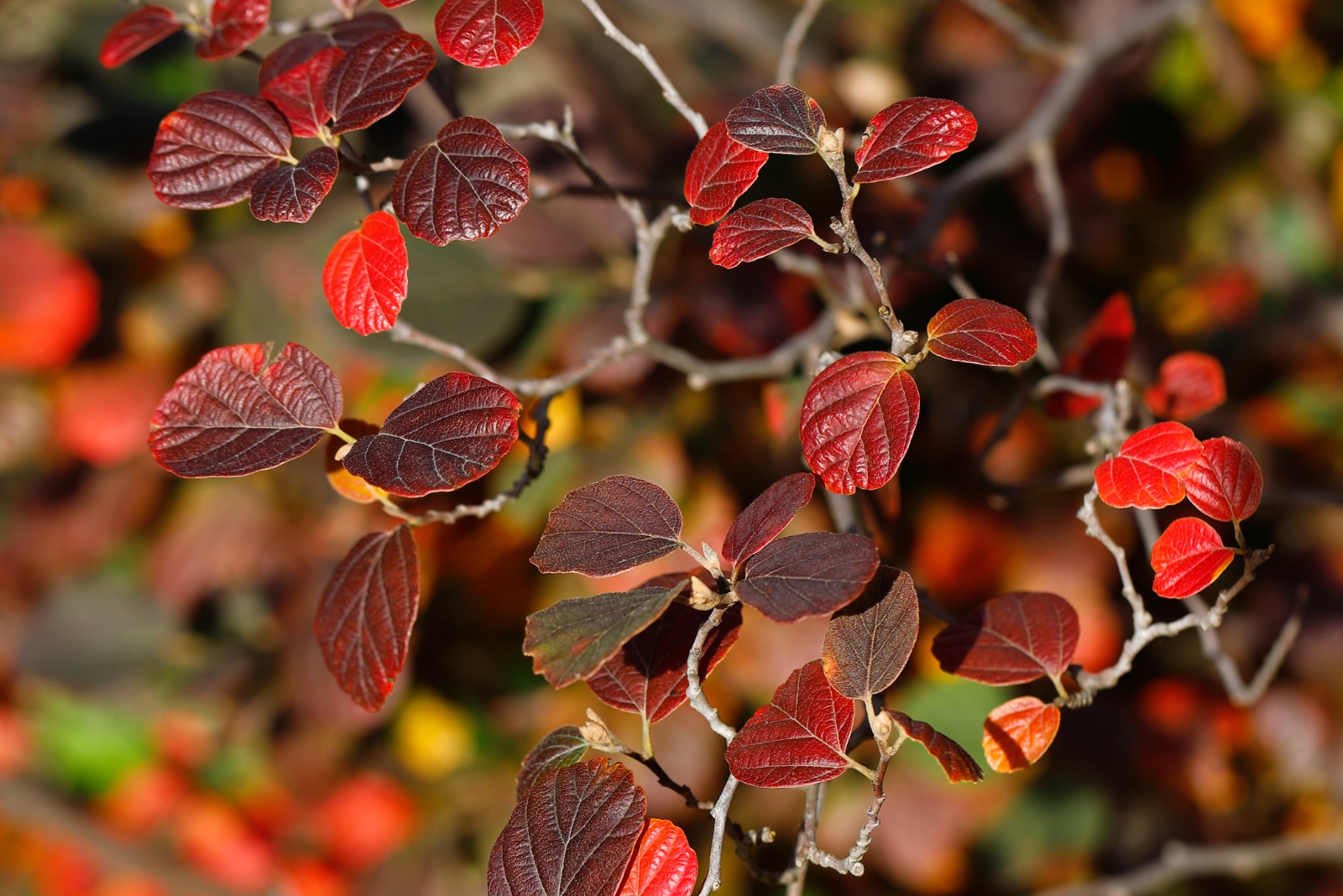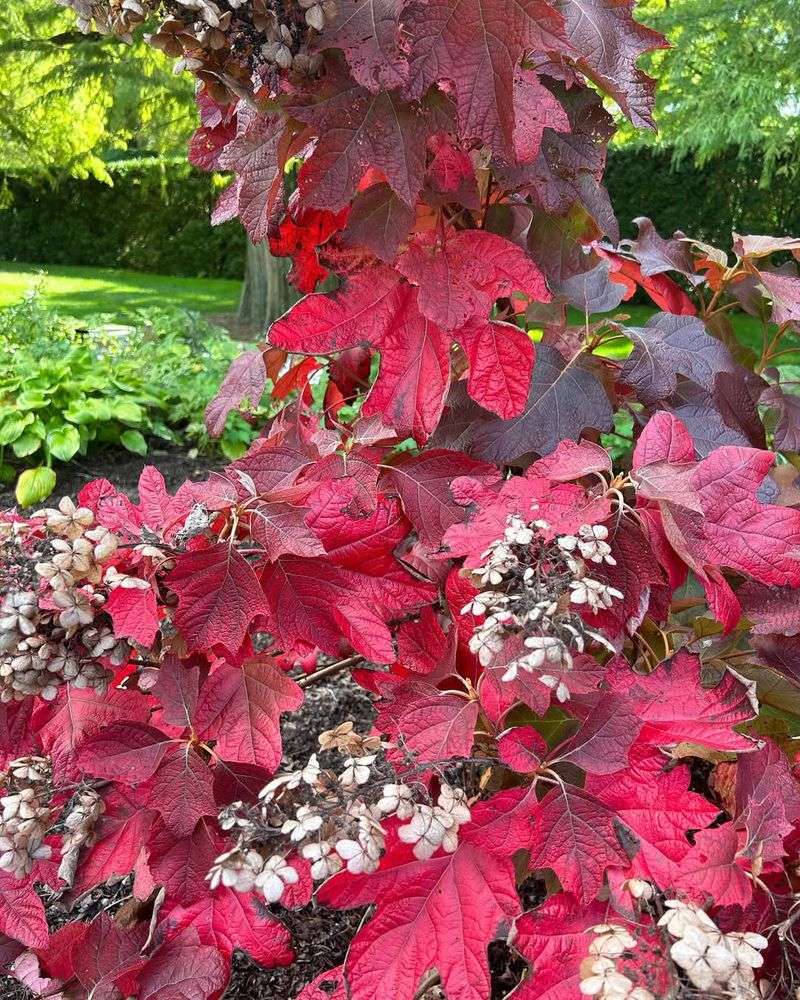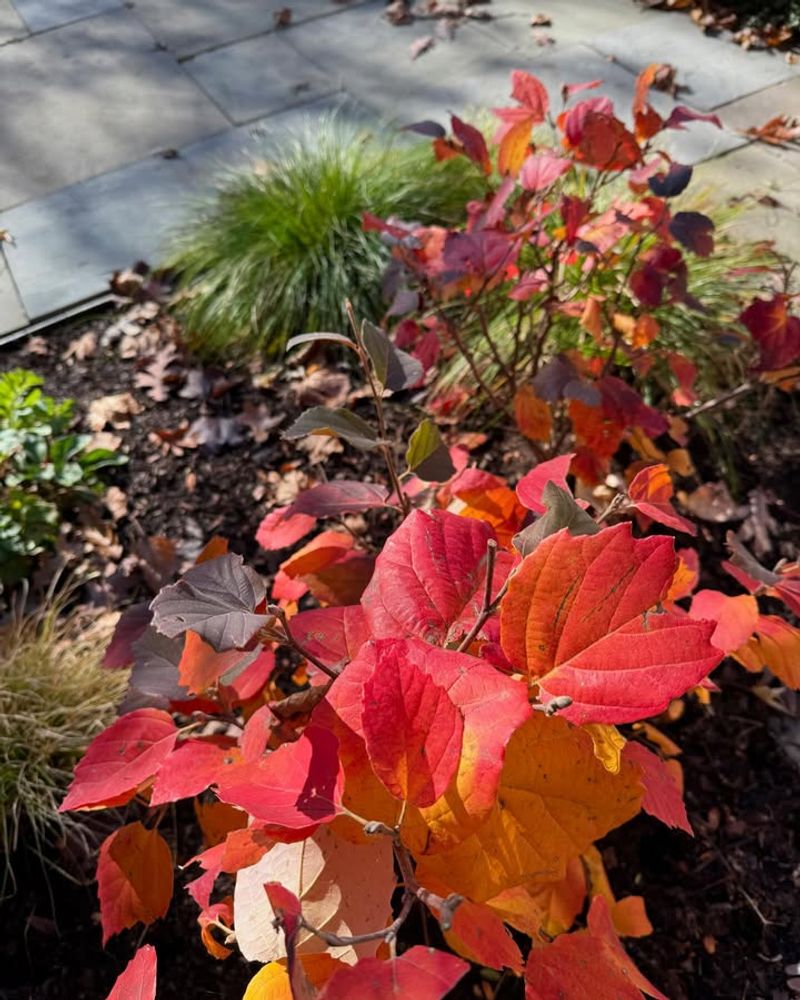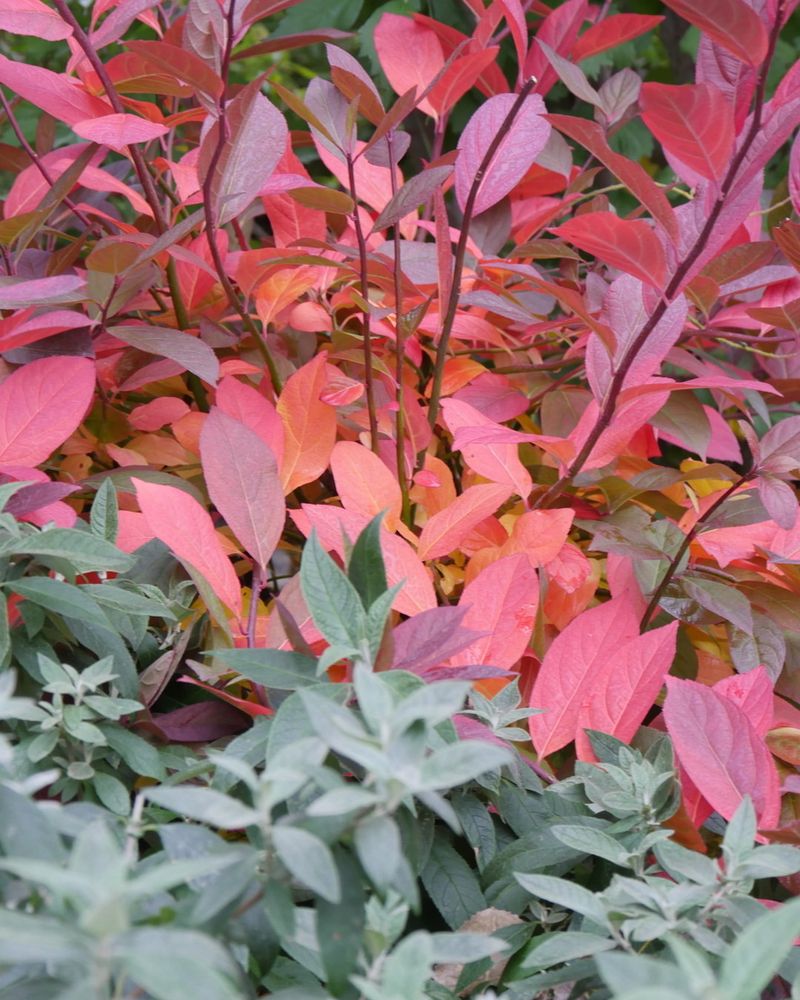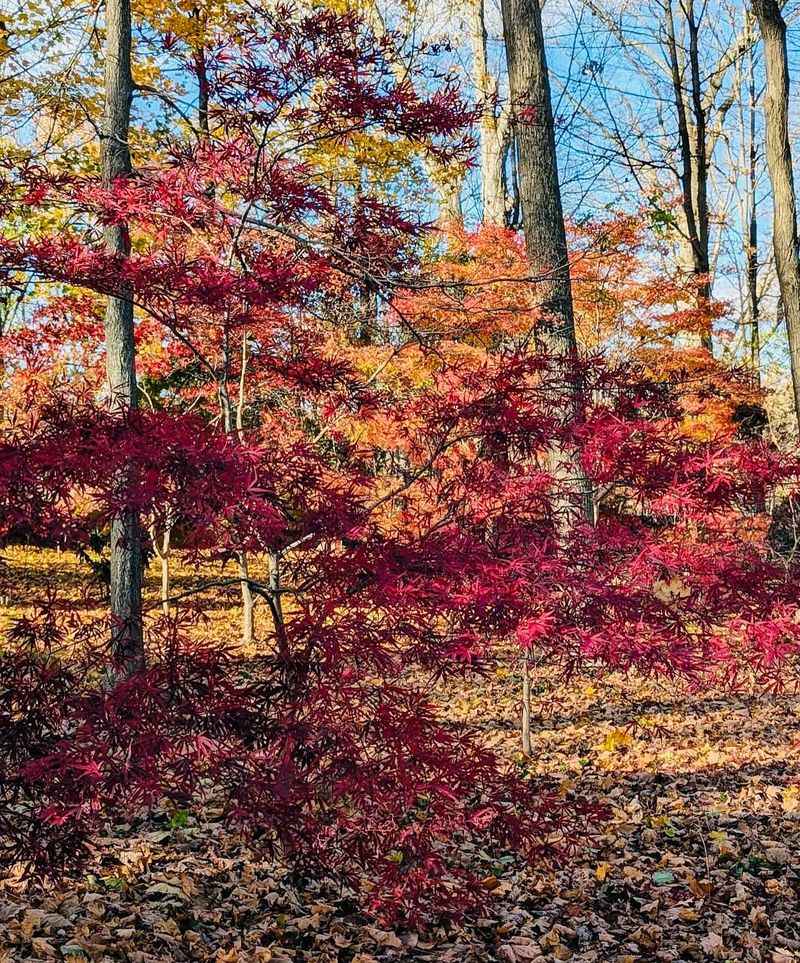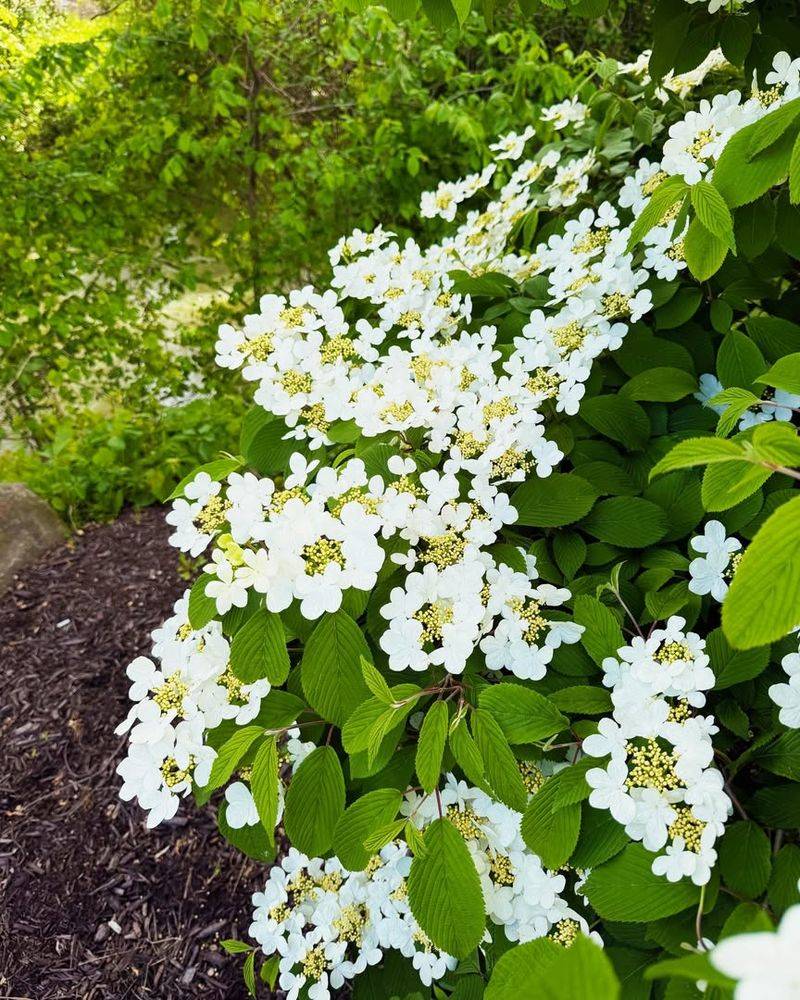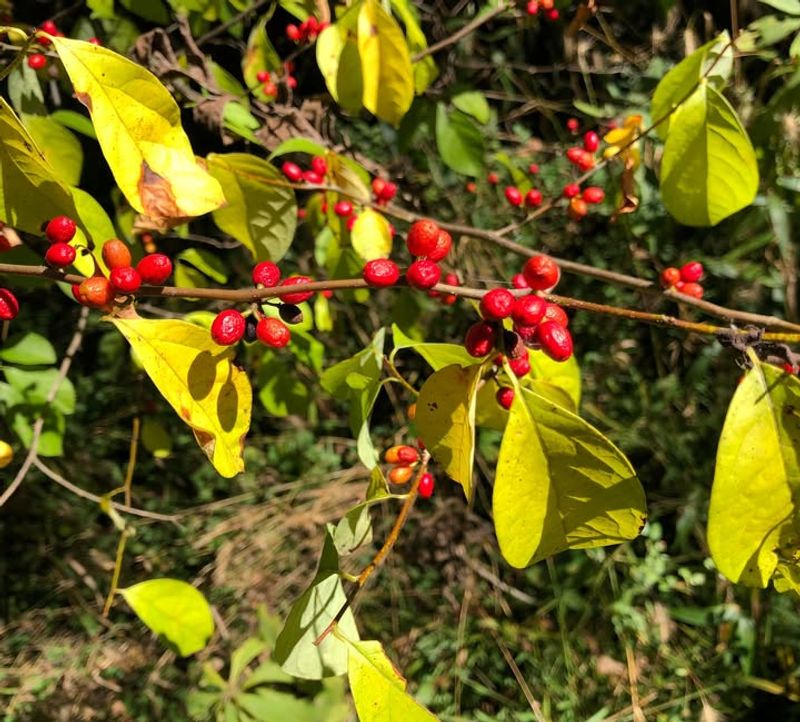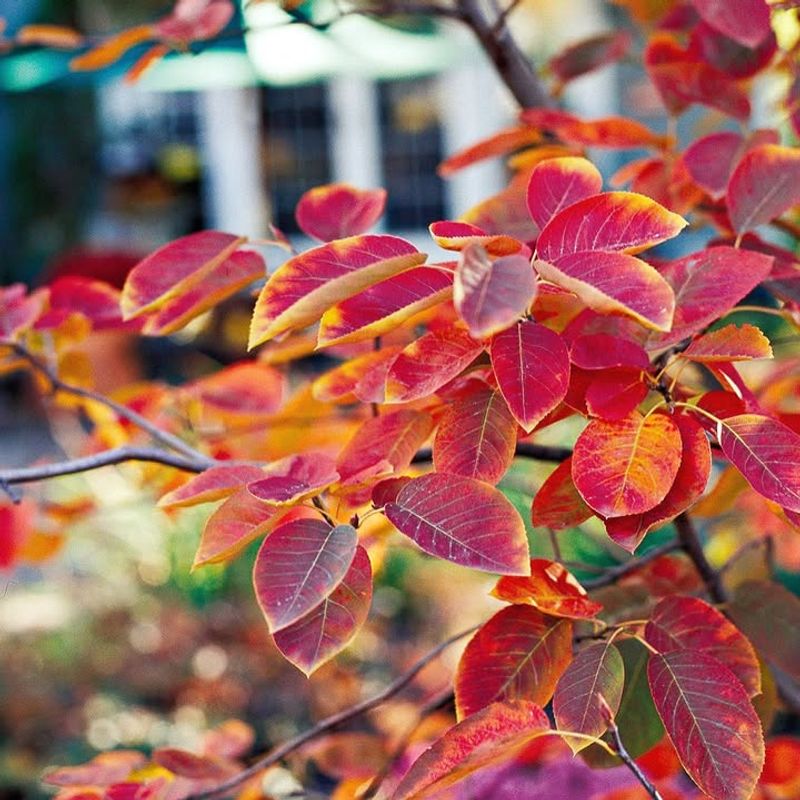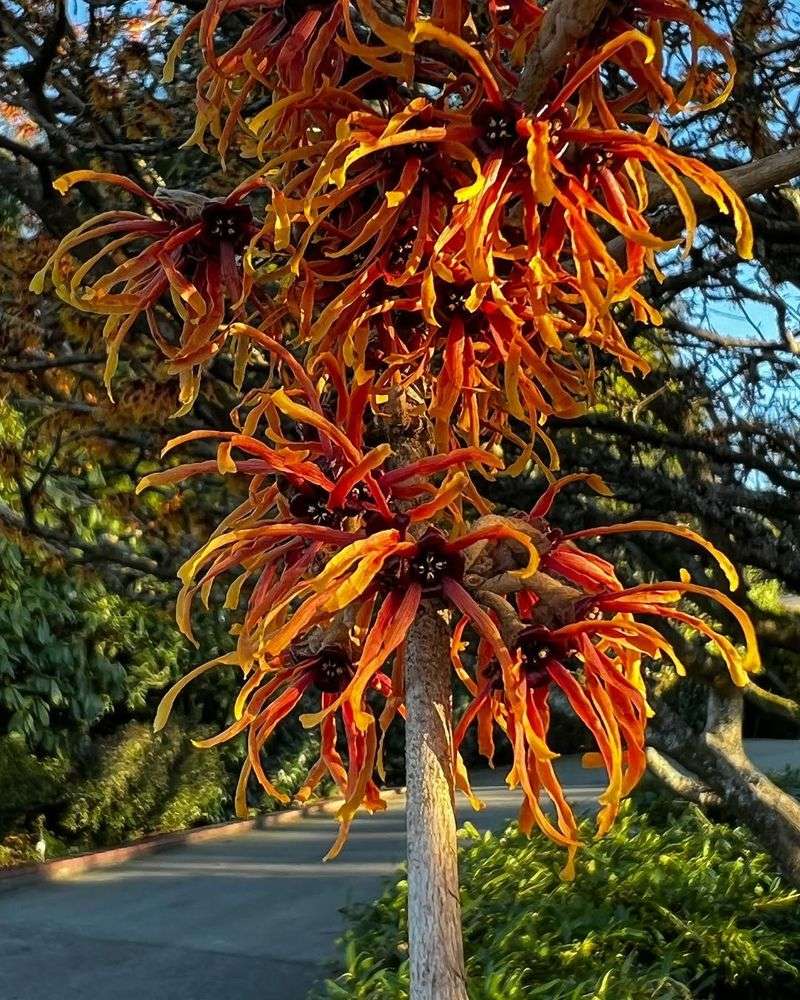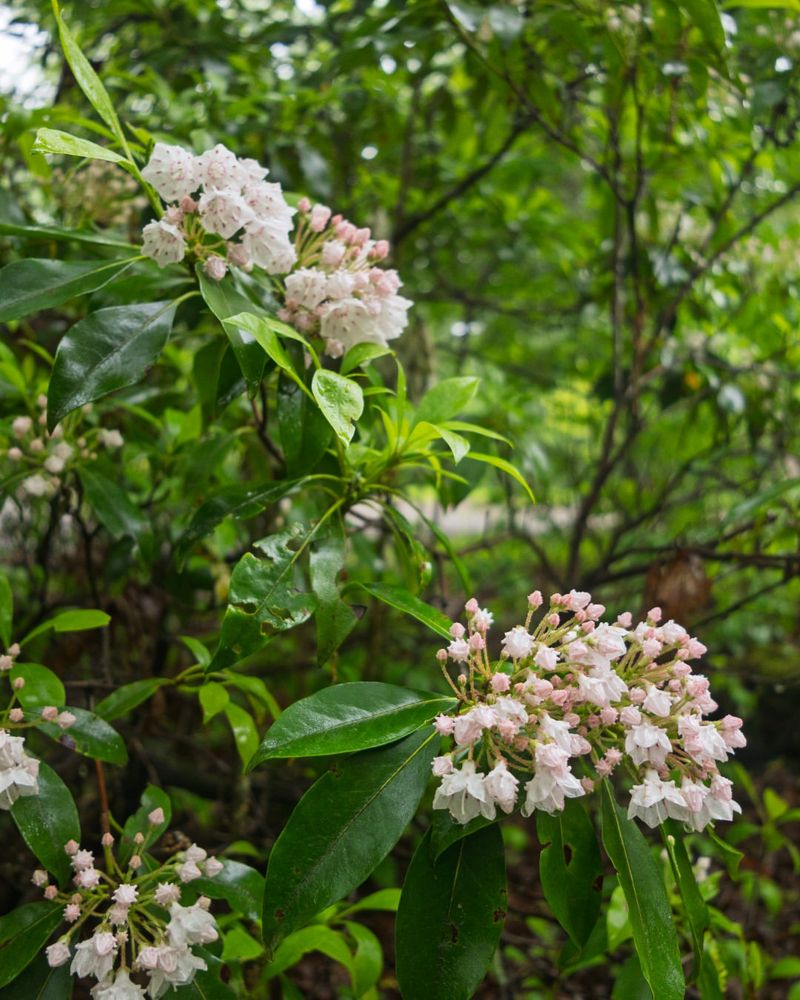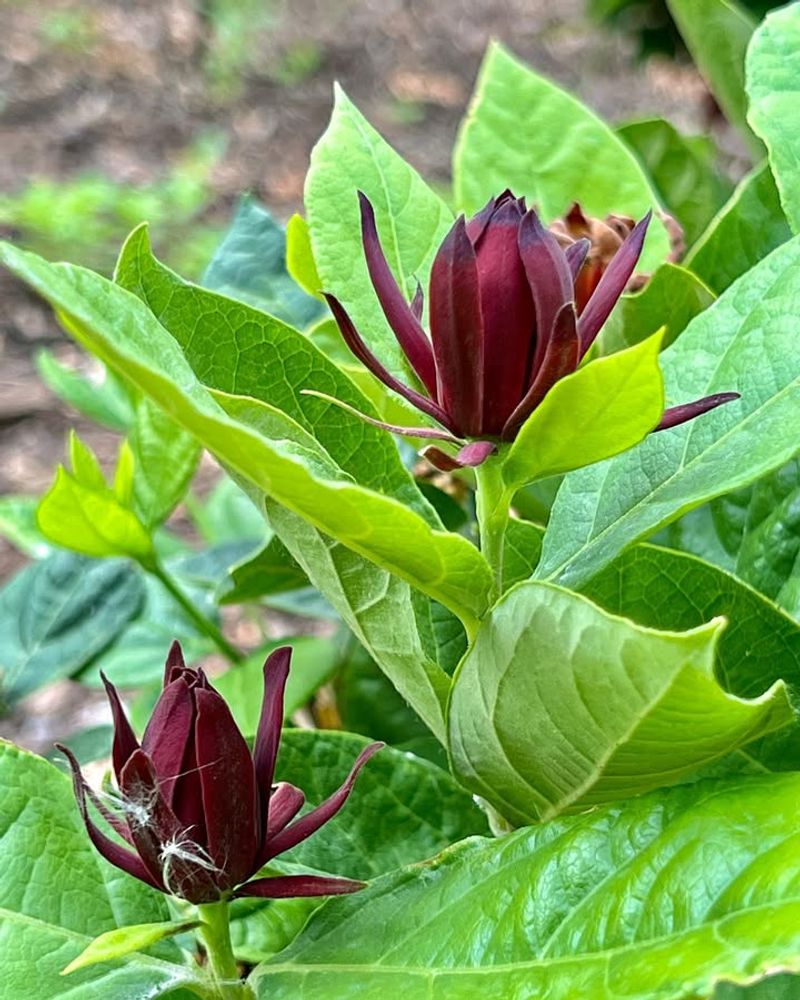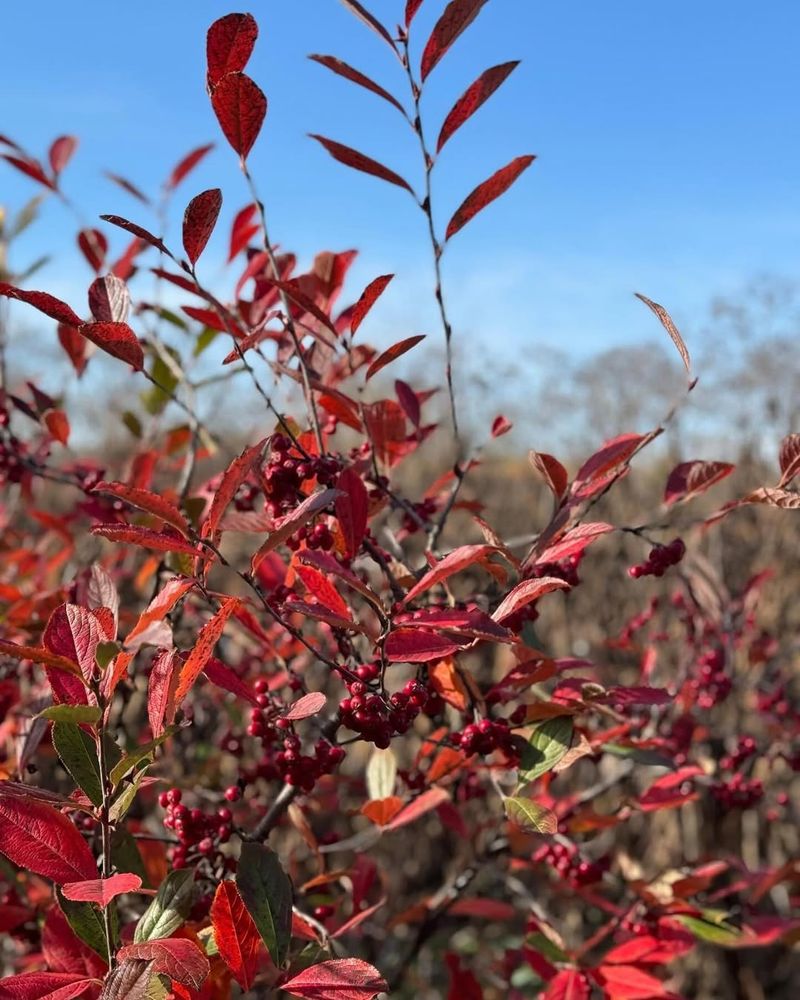North Carolina gardens often have shady spots where sunlight barely reaches, making it tricky to find plants that thrive there. But autumn brings exciting opportunities when certain trees and shrubs transform these dim areas into colorful displays of reds, oranges, and yellows.
Many shade-loving plants actually prefer cooler, protected spaces and reward gardeners with stunning fall foliage. Get ready to discover beautiful options that will brighten your shaded yard this season!
1. Oakleaf Hydrangea
Picture leaves shaped like giant oak tree foliage turning deep burgundy as temperatures drop. Oakleaf hydrangea handles shade beautifully while producing cone-shaped white flowers in summer that fade to pink.
By fall, the real magic happens when foliage transforms into rich shades of red, mahogany, and bronze. The peeling cinnamon-colored bark adds winter interest after leaves drop.
Plant it under tall pines or hardwoods where it gets dappled light throughout the day for best results.
2. Fothergilla
Few shrubs rival fothergilla when autumn arrives with its fireworks display of color. Leaves shift from green to a spectacular blend of yellow, orange, and scarlet that seems almost painted on.
Spring brings fragrant bottlebrush-like white flowers before leaves emerge, giving you two seasons of beauty. Fothergilla stays compact, rarely exceeding five feet tall, making it perfect for smaller shaded spaces.
It tolerates acidic soil common in North Carolina and requires minimal pruning or maintenance once established.
3. Virginia Sweetspire
Native to the southeastern United States, Virginia sweetspire knows exactly how to handle North Carolina conditions. Fragrant white flower spikes dangle gracefully in late spring, attracting butterflies and bees to shaded corners.
Come autumn, foliage explodes into brilliant shades of crimson, burgundy, and purple that last for weeks. The shrub spreads slowly through underground stems, creating natural-looking drifts over time.
Plant it near streams or low spots where moisture collects naturally for optimal growth and color.
4. Japanese Maple
Elegance defines Japanese maple, with its delicate branching pattern and refined leaves that look like tiny fans. Many varieties actually prefer afternoon shade in North Carolina to prevent leaf scorch during hot summers.
Fall color varies by cultivar, ranging from brilliant scarlet to golden yellow or deep purple. Some varieties hold their color for over a month before leaves finally drop.
Choose dwarf varieties for small gardens or let larger specimens become stunning focal points in woodland settings.
5. Doublefile Viburnum
Horizontal branches create distinctive layered tiers that catch your eye even from a distance. White flower clusters line the tops of branches in spring like snow sitting on shelves.
Red berries appear in summer, attracting birds before turning black by early fall. Foliage transitions to shades of burgundy, reddish-purple, and sometimes orange as autumn progresses.
The architectural branching structure remains attractive through winter after leaves drop. Doublefile viburnum tolerates part shade exceptionally well while maintaining compact growth habits perfect for smaller yards.
6. Spicebush
Crush a leaf or twig and you will immediately understand how spicebush earned its name from the wonderful fragrance released. Yellow flowers bloom before leaves emerge in early spring, providing critical food for pollinators.
Female plants produce bright red berries that migrating birds devour enthusiastically during fall migration. Foliage turns a clear, luminous yellow that brightens even the darkest woodland corners.
Spicebush is the host plant for spicebush swallowtail butterflies, making it valuable for wildlife gardens throughout North Carolina.
7. Serviceberry
Did you know serviceberry produces edible berries that taste similar to blueberries with a hint of almond? White spring blossoms appear early, sometimes while late snow still lingers on the ground.
Berries ripen to deep purple in early summer, though birds usually snatch them quickly. Fall brings a spectacular show when leaves turn shades of yellow, orange, and red simultaneously.
Smooth gray bark adds year-round interest. Serviceberry works beautifully as an understory tree beneath taller oaks or hickories in North Carolina landscapes.
8. Witch Hazel
Blooming in late fall or winter when everything else sleeps, witch hazel seems almost magical with its spidery yellow or orange flowers. Fragrance carries surprisingly far on cold air, offering unexpected sweetness during dreary months.
Before flowers appear, foliage puts on its own show with clear yellow color that glows in shaded areas. Leaves hold their color well before dropping to reveal interesting branching patterns.
Native varieties thrive in North Carolina woodlands, requiring little care once roots establish themselves in organic-rich soil.
9. Mountain Laurel
Evergreen leaves mean mountain laurel provides year-round color, but fall brings subtle bronze and burgundy tints to foliage edges. Spring flowers are the main attraction, with intricate pink or white blooms resembling tiny umbrellas.
Growing naturally in North Carolina mountains, this shrub handles shade and acidic soil perfectly. Glossy leaves create a polished look even in the darkest corners of woodland gardens.
Plant it alongside azaleas and rhododendrons for a stunning evergreen foundation that needs minimal attention once established properly.
10. Sweetshrub
Reddish-brown flowers smell like strawberries, pineapple, or wine depending on who you ask and which variety you plant. Blooms appear sporadically from late spring through summer, filling shaded areas with unexpected fragrance.
Fall foliage turns clear yellow or golden, creating bright spots under tree canopies. Native to the southeastern states, sweetshrub adapts easily to various soil types found throughout North Carolina.
Deer usually leave it alone, making it ideal for rural properties where browsing pressure limits other plant choices significantly.
11. Red Chokeberry
Bright red berries cluster along stems throughout fall and winter, providing food when birds need it most. White spring flowers attract beneficial insects before berries develop through summer months.
Foliage transforms into stunning shades of red, burgundy, and orange-red that rival any burning bush display. Red chokeberry tolerates wet soil better than most shrubs, making it perfect for low-lying shaded areas.
The berries are technically edible but extremely tart, though they make excellent jelly when mixed with sweeter fruits like apples or pears.

